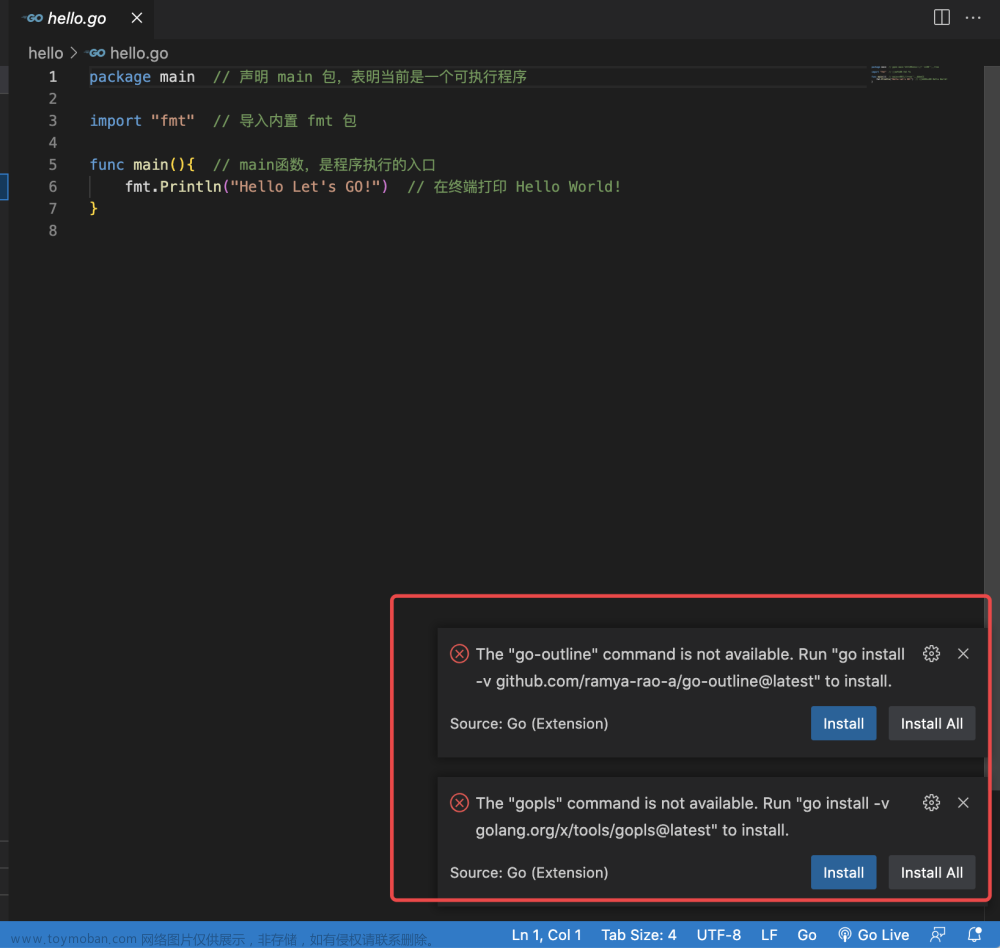Q1 无缓冲的 channel 和 有缓冲的 channel 的区别?
对于无缓冲的 channel,发送方将阻塞该信道,直到接收方从该信道接收到数据为止,而接收方也将阻塞该信道,直到发送方将数据发送到该信道中为止。
对于有缓存的 channel,发送方在没有空插槽(缓冲区使用完)的情况下阻塞,而接收方在信道为空的情况下阻塞。
例如:
func main() {
st := time.Now()
ch := make(chan bool)
go func () {
time.Sleep(time.Second * 2)
<-ch
}()
ch <- true // 无缓冲,发送方阻塞直到接收方接收到数据。
fmt.Printf("cost %.1f s\n", time.Now().Sub(st).Seconds())
time.Sleep(time.Second * 5)
}
func main() {
st := time.Now()
ch := make(chan bool, 2)
go func () {
time.Sleep(time.Second * 2)
<-ch
}()
ch <- true
ch <- true // 缓冲区为 2,发送方不阻塞,继续往下执行
fmt.Printf("cost %.1f s\n", time.Now().Sub(st).Seconds()) // cost 0.0 s
ch <- true // 缓冲区使用完,发送方阻塞,2s 后接收方接收到数据,释放一个插槽,继续往下执行
fmt.Printf("cost %.1f s\n", time.Now().Sub(st).Seconds()) // cost 2.0 s
time.Sleep(time.Second * 5)
}
Q2 什么是协程泄露(Goroutine Leak)?
协程泄露是指协程创建后,长时间得不到释放,并且还在不断地创建新的协程,最终导致内存耗尽,程序崩溃。常见的导致协程泄露的场景有以下几种:
- 缺少接收器,导致发送阻塞
这个例子中,每执行一次 query,则启动1000个协程向信道 ch 发送数字 0,但只接收了一次,导致 999 个协程被阻塞,不能退出。
func query() int {
ch := make(chan int)
for i := 0; i < 1000; i++ {
go func() { ch <- 0 }()
}
return <-ch
}
func main() {
for i := 0; i < 4; i++ {
query()
fmt.Printf("goroutines: %d\n", runtime.NumGoroutine())
}
}
// goroutines: 1001
// goroutines: 2000
// goroutines: 2999
// goroutines: 3998
-
缺少发送器,导致接收阻塞
那同样的,如果启动 1000 个协程接收信道的信息,但信道并不会发送那么多次的信息,也会导致接收协程被阻塞,不能退出。 -
死锁(dead lock)
两个或两个以上的协程在执行过程中,由于竞争资源或者由于彼此通信而造成阻塞,这种情况下,也会导致协程被阻塞,不能退出。 -
无限循环(infinite loops)
这个例子中,为了避免网络等问题,采用了无限重试的方式,发送 HTTP 请求,直到获取到数据。那如果 HTTP 服务宕机,永远不可达,导致协程不能退出,发生泄漏。
func request(url string, wg *sync.WaitGroup) {
i := 0
for {
if _, err := http.Get(url); err == nil {
// write to db
break
}
i++
if i >= 3 {
break
}
time.Sleep(time.Second)
}
wg.Done()
}
func main() {
var wg sync.WaitGroup
for i := 0; i < 1000; i++ {
wg.Add(1)
go request(fmt.Sprintf("https://127.0.0.1:8080/%d", i), &wg)
}
wg.Wait()
}
Q3 Go 可以限制运行时操作系统线程的数量吗?
The GOMAXPROCS variable limits the number of operating system threads that can execute user-level Go code simultaneously. There is no limit to the number of threads that can be blocked in system calls on behalf of Go code; those do not count against the GOMAXPROCS limit.
可以使用环境变量 GOMAXPROCS 或 runtime.GOMAXPROCS(num int) 设置,例如:文章来源:https://www.toymoban.com/news/detail-717676.html
runtime.GOMAXPROCS(1) // 限制同时执行Go代码的操作系统线程数为 1
从官方文档的解释可以看到,GOMAXPROCS 限制的是同时执行用户态 Go 代码的操作系统线程的数量,但是对于被系统调用阻塞的线程数量是没有限制的。GOMAXPROCS 的默认值等于 CPU 的逻辑核数,同一时间,一个核只能绑定一个线程,然后运行被调度的协程。因此对于 CPU 密集型的任务,若该值过大,例如设置为 CPU 逻辑核数的 2 倍,会增加线程切换的开销,降低性能。对于 I/O 密集型应用,适当地调大该值,可以提高 I/O 吞吐率。文章来源地址https://www.toymoban.com/news/detail-717676.html
到了这里,关于Go 语言面试题(三):并发编程的文章就介绍完了。如果您还想了解更多内容,请在右上角搜索TOY模板网以前的文章或继续浏览下面的相关文章,希望大家以后多多支持TOY模板网!










